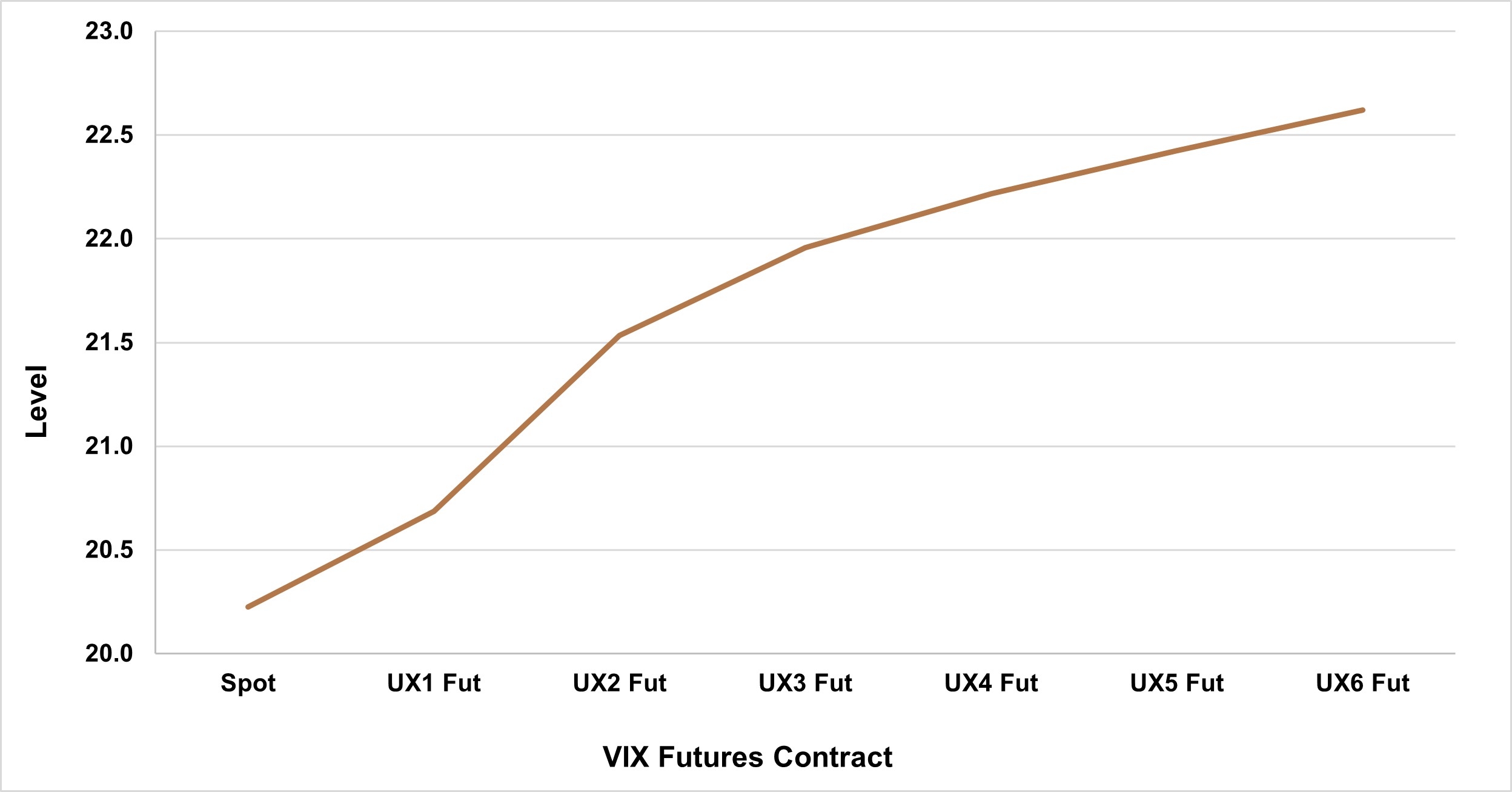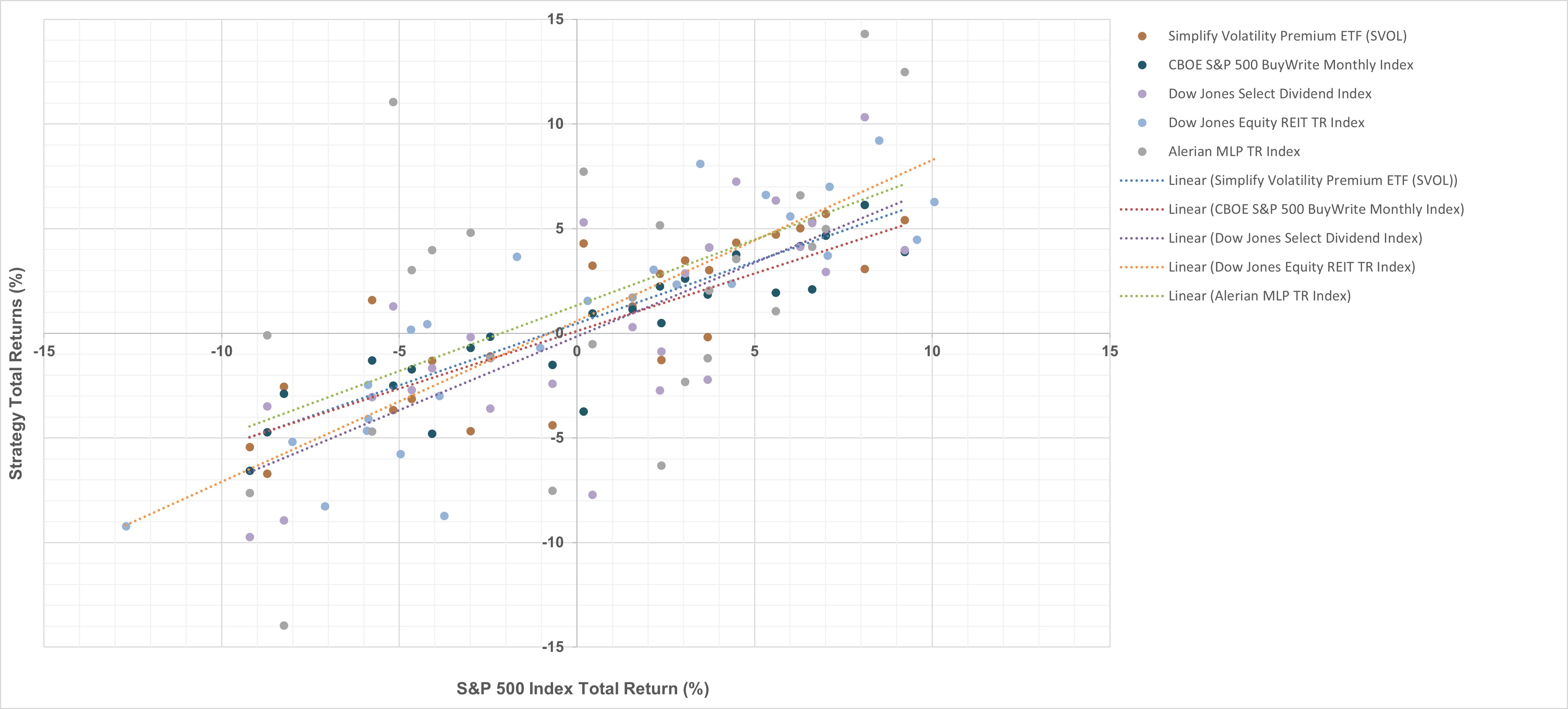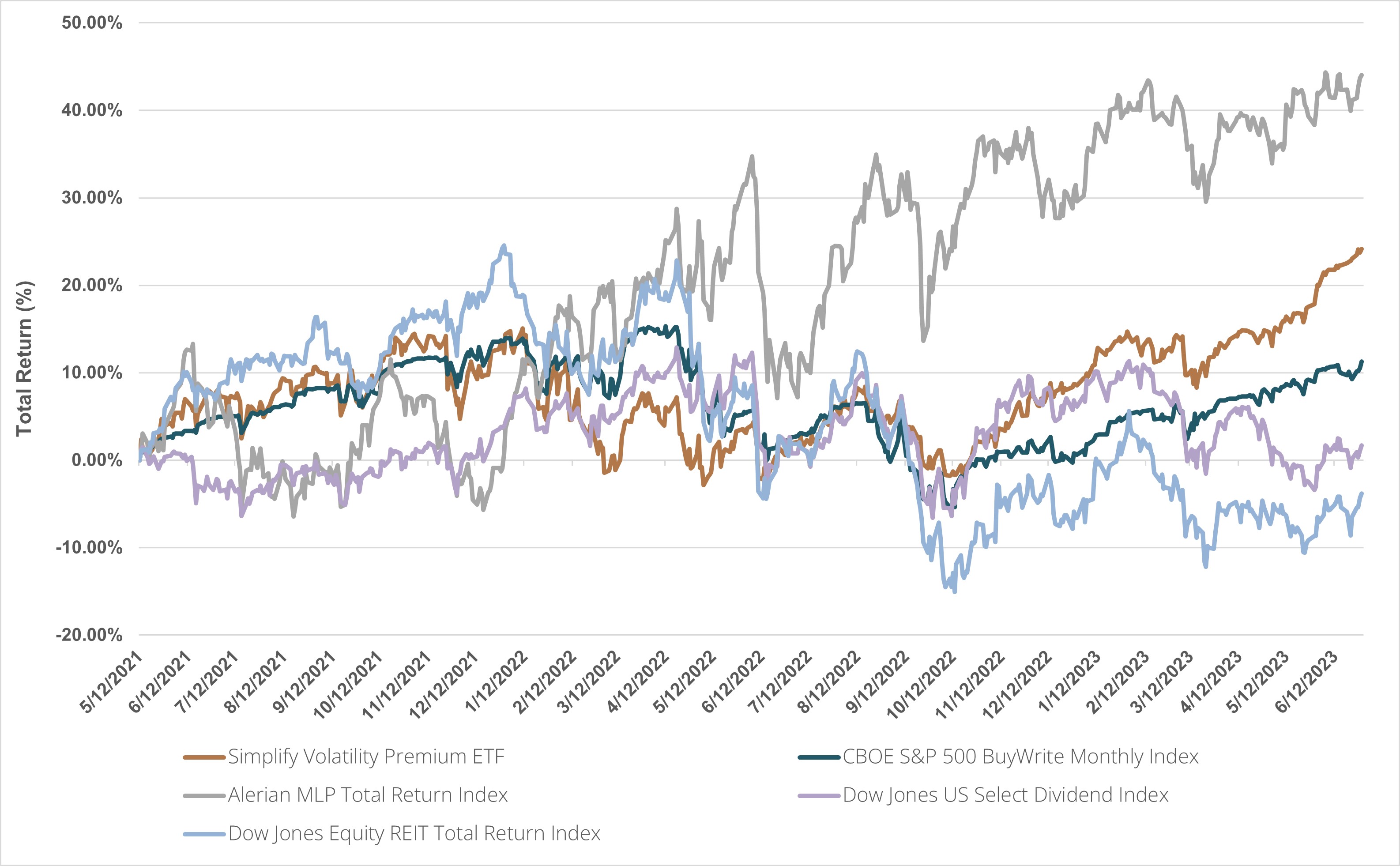Introduction
Equity income investing is an increasingly popular strategy, employed by investors who are looking for a steady cash flow from their equity portfolio, especially during periods of limited expected capital appreciation for equities. Traditionally equity income investments include dividend-paying stocks, Real Estate Investment Trusts (REITs), and Master Limited Partnerships (MLPs). But as capital markets evolve there are new alternative forms of equity income that are gaining traction. In this blog, we explore Simplify’s take on a novel equity income strategy using the VIX carry trade and will demonstrate that this strategy has delivered attractive risk-adjusted returns relative to the broader equity income category and that it may also serve as a reliable diversifier to a broader equity income portfolio.
Equity Income: Room for New Entrants?
Equity income is an investment strategy typically used by those seeking a steady stream of income from their stock portfolio allocations. The earliest equity income strategies owned individual or groups of stocks that regularly paid dividends, thus generating income in addition to the potential for capital gains. This strategy is characterized by two main elements: equity beta and an income stream. As time progressed and access to newer markets became more widely available, equity income strategies broadened to include REITs, energy investments in MLPs, and option selling strategies like covered call (Buy-Write) programs. But are there additional ways to obtain equity income exposure beyond these traditional strategies?
At Simplify we harness the structural roll down in the VIX term structure (see Figure 1) as a way of providing yet another distinct form of equity income to investors. This exposure is accessible through the Simplify Volatility Premium ETF (SVOL), which sells near-dated VIX futures contracts and holds the position for a short period of time before buying back the short position to close them. SVOL also holds a call option on front-month VIX exposure to hedge against potential catastrophic VIX spikes.
Figure 1: VIX Term Structure - A New Equity Income Opportunity?
2006-2022

VIX term structure: the relationship between VIX future prices and maturity dates.
How do we know that these strategies, including VIX carry, can all be considered to be “equity income”? Figure 2 shows the monthly return scatterplots of common equity income indices, including SVOL, relative to the S&P 500 Index (SPX). Notice that all linear regressions produced a positive trendline, indicating a positive beta to the benchmark index, demonstrating that these funds are properly classified as equity income strategies.
Figure 2: Equity Income Regression Analysis
Monthly Total Return, 6/30/2021 - 6/30/2023

Enhancing Risk-Adjusted Returns Through Equity Income
Now that we have introduced the short VIX carry concept as implemented in SVOL, let’s examine the strategy’s potential as an equity income alternative. In Figure 3, we present the cumulative total returns of each strategy since SVOL’s inception date. We then expand the return lens to some key risk and reward statistics in Figure 4, displaying the 2-year volatility, Sharpe ratios, and max drawdowns for each strategy. REITs and US Dividends, the two strategies that underperformed the S&P 500 benchmark, both displayed negative Sharpe ratios, with REITs experiencing a catastrophic drawdown in excess of 30%. Both SVOL and MLPs outperformed the benchmark during this sample, but MLPs also displayed higher volatility than any other strategy. In contrast, SVOL displayed lower drawdowns, lower volatility, and a higher Sharpe ratio than the benchmark, making it the equity income darling on a risk-adjusted basis.
Figure 3: Equity Income Strategy Portfolios
Cumulative Total Return, 5/12/2021 - 6/30/2023

Figure 4: Equity Income Strategy Portfolios
Total Return, 5/12/2021 - 6/30/2023

*As of 6/30/2023, assumes 1-3M TBIL Index 2yr total return as risk-free rate in Sharpe.
The performance data quoted represents past performance and is no guarantee of future results. Current performance may be lower or higher than the performance data quoted. Investment returns and principal value of an investment will fluctuate so that an investor's shares, when redeemed, may be worth more or less than their original cost. View SVOL standardized performance and performance data for the most recent month-end.
Diversifying an Equity Income Portfolio
It is also worth examining how different equity income strategies interact with one another because very often, owning a diversified portfolio of strategies will be better than owning just a single name. Figure 5 demonstrates that SVOL has correlations between 0.40-0.71 with the rest of the equity income universe, which implies that there are indeed welcome diversification benefits from using VIX carry strategies in a broader equity income ensemble.
Figure 5: Equity Income Strategy Correlation Matrix
Weekly Total Return, 5/30/2021 - 6/30/2023

In Conclusion
Equity income strategies will continue to gain popularity among investors, especially during challenging market environments. However, as the market landscape evolves, it is critical to explore new opportunities that can provide additional diversification benefits. The short VIX carry trade via the Simplify Volatility Premium ETF presents a compelling alternative for those seeking to enhance their equity income portfolios. By capitalizing on the volatility risk premium, SVOL has proven its potential for attractive risk-adjusted returns, while simultaneously providing diversification benefits to other traditional equity income investments.
View SVOL Fund Insights Video Recap
GLOSSARY:
Buy-Write: A strategy that refers to an investment that receives call premiums on an underlying equity position seeking to generate income.
Covered Call: A financial transaction in which the investor selling call options owns an equivalent amount of the underlying security.
Master Limited Partnerships (MLP): A business venture in the form of a publicly-traded limited partnership. It combines the tax benefits of a private partnership with the liquidity of a publicly-traded company.
Real Estate Investment Trust (REIT): A company that owns, operates, or finances income-generating real estate.
Sharpe Ratio: The ratio compares the return of an investment with its risk. It's a mathematical expression of the insight that excess returns over a period of time may signify more volatility and risk, rather than investing skill.
VIX Index: A real-time market index representing the market's expectations for volatility over the coming 30 days.




